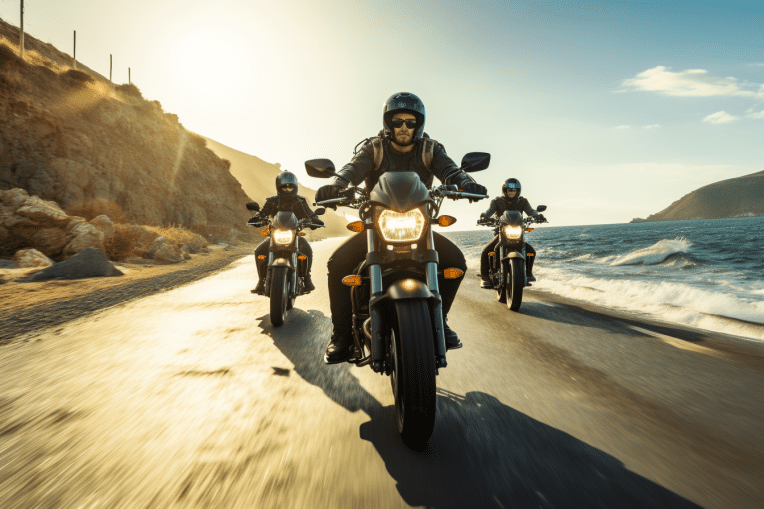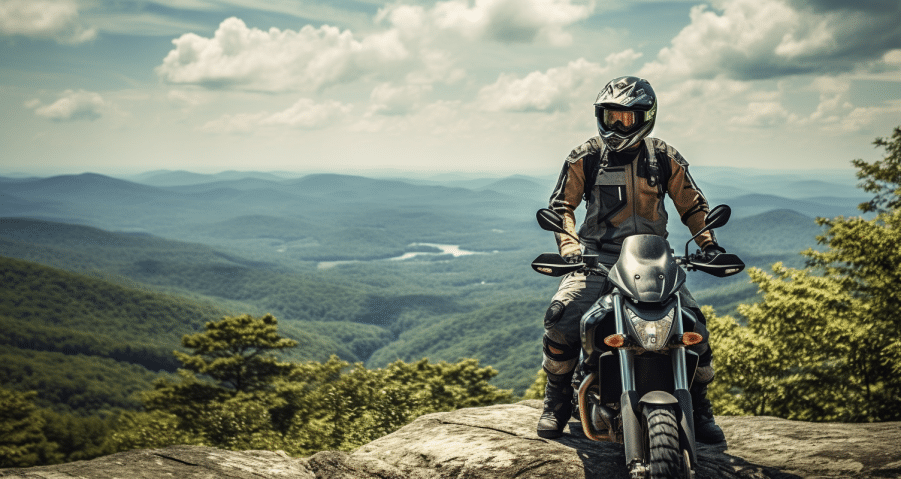Riding in groups is more than just a shared journey on two wheels; it’s all about creating unforgettable experiences and building camaraderie with fellow riders. However, leading a group ride comes with a unique set of responsibilities. As the ride leader, you play a crucial role in ensuring the safety and enjoyment of all participants.
In this leader’s planning guide, we will explore the key aspects of organizing and directing group motorcycle rides, equipping you with the knowledge and skills to become a confident and effective leader. Plus, we’ll introduce you to AA Motorcycle Shipping and how our services can be invaluable for your group rides.
Understanding Your Group
Before you even start planning your group ride, it’s essential to understand your fellow riders. Here are some crucial aspects to consider:
- Rider Experience and Skill Levels: Gauge the experience and skill levels of participants in your group. Understanding your riders’ capabilities will help you tailor the ride to their proficiency, ensuring that no one is left behind or feeling overwhelmed.
- Specific Rider Needs: Be aware of any specific needs within your group, whether they relate to dietary restrictions, medical concerns, or other considerations. Ensuring everyone’s comfort and safety is paramount.
- Group Size Considerations: Different group sizes may require different levels of organization. Large groups may demand stricter coordination, while smaller groups can afford more flexibility.
Pre-Ride Preparation
Thorough pre-ride preparation is the key to a successful group motorcycle ride:
- Route and Stops: Plan your route meticulously, considering scenic routes, interesting landmarks, and convenient rest areas. Always have an alternative route or escape plan in case of unforeseen obstacles. Consider using online mapping tools and GPS apps for accurate route planning.
- Weather and Road Conditions: Keep an eye on weather forecasts and road conditions, as these can have a significant impact on your ride. Be prepared to adapt your plans if necessary.
- Motorcycle Maintenance: Encourage all group members to perform pre-ride safety checks on their motorcycles. This includes inspecting tires, brakes, lights, and ensuring their bikes are in good working order.
- Communication Methods: Establish clear communication methods within the group. This can include hand signals, two-way radios, or Bluetooth communication devices to ensure that everyone stays connected and informed throughout the ride.
The Leader’s Role During the Ride
As the leader of the group, your role during the ride is multifaceted:
- Setting a Safe and Consistent Pace: Ensure that you set a safe and consistent pace for the group. Avoid abrupt speed changes and communicate clearly if you need to change the planned pace.
- Proper Lane Positioning and Formation: Maintain a safe and predictable lane position within your group. Encourage staggered formation to allow adequate space between riders, enhancing safety and visibility.
- Monitoring Group Spacing and Visibility: Regularly check your mirrors to monitor the group and ensure that no one falls behind or gets separated from the pack.
- Dealing with Unexpected Situations and Emergencies: Be prepared to handle unexpected situations such as breakdowns, accidents, or unforeseen roadblocks. Have a basic understanding of first aid and motorcycle maintenance. Designate a “sweep” rider to stay at the back, assisting anyone encountering difficulties.
Communication Strategies
Effective communication is vital for the success of group motorcycle rides:
- Hand Signals and Non-Verbal Communication: Ensure all riders are familiar with hand signals and non-verbal communication techniques. These signals can convey essential messages without the need for spoken words.
- Two-Way Radios or Bluetooth Communication Devices: Consider using two-way radios or Bluetooth communication devices, especially on longer or more challenging rides. These tools can enhance communication within the group and provide real-time updates.
Maintaining Group Cohesion
To keep the group together and maintain cohesion, consider the following:
- Scheduled Rest Stops: Schedule regular rest stops to address rider fatigue and give participants a chance to stretch their legs and hydrate.
- Fuel and Restroom Stops: Plan for fuel and restroom breaks to avoid rushed stops and ensure everyone has an opportunity to refuel and refresh.
- Keeping the Group Together in Traffic: Use hand signals to indicate lane changes and turns. Encourage riders to maintain their positions within the staggered formation to navigate traffic smoothly.
Handling Challenges
Group rides may present various challenges:
- Varying Skill Levels: Plan your route and ride pace to accommodate riders with varying skill levels. Provide guidance and support for less-experienced riders, and consider implementing a buddy system to pair them with more seasoned riders.
- Mechanical Issues: Familiarize yourself with basic motorcycle maintenance, as minor repairs may be necessary during the ride. Encourage riders to perform pre-ride safety checks to minimize the risk of mechanical issues.
Post-Ride Reflection
Gathering feedback from participants after the group ride is crucial for improvement:
- Feedback Gathering: Encourage group members to share their experiences and provide constructive feedback.
- Reflect and Improve: Use the feedback to refine your leadership skills and make necessary adjustments for future rides. Reflect on the ride’s successes and areas for improvement.
The Takeaway
Becoming a capable leader for group motorcycle rides is both a rewarding and challenging experience. You play a pivotal role in ensuring the safety and enjoyment of all participants. By understanding your group, conducting thorough pre-ride preparation, maintaining effective communication, and addressing challenges with a solution-oriented approach, you’ll be well-equipped to lead unforgettable journeys.
As a valuable addition, consider the services of AA Motorcycle Shipping, which can provide seamless and secure transport for your group’s motorcycles, eliminating the logistics of getting the bikes to and from your starting point. With the right guidance and leadership, group motorcycle rides can be incredibly rewarding adventures for all participants, allowing you to share the thrill of the open road with fellow riders.
And always keep in mind, should you ever require motorcycle transport services, AA Motorcycle Shipping ensures your bike’s safe delivery. Get a free quote now!



